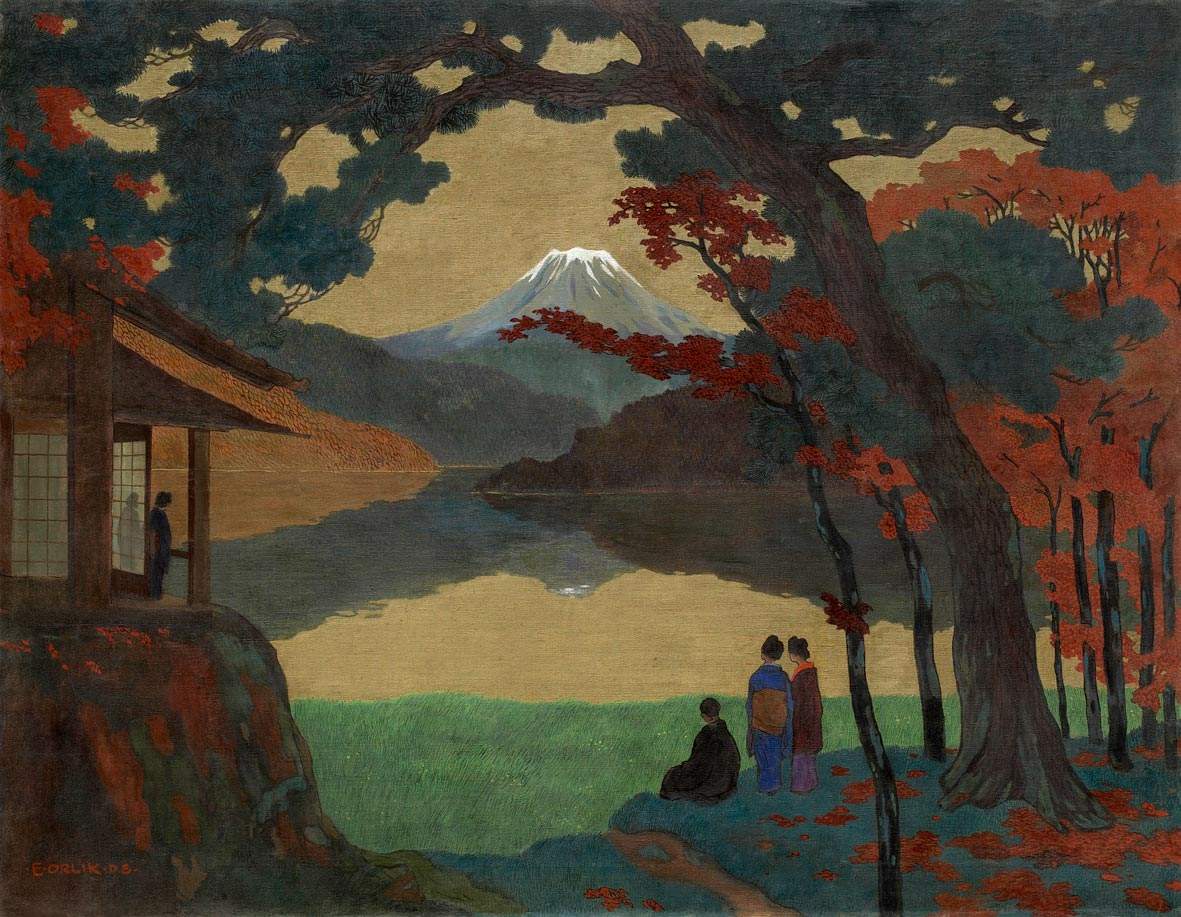The autumn exhibition at Palazzo Roverella in Rovigo is dedicated to Japanism: it is titled Japonism. Winds of the Orient in European Art 1860 - 1915, is curated by Francesco Parisi and is scheduled from September 28, 2019 to January 26, 2020. The theme is the discovery of Japanese decorative arts, which, in the late 19th century, gave a significant jolt to the whole of European art. It was a powerful wind of renewal that from the East invested models, customs stratified over centuries, leading the art of the Old Continent toward new and more essential compositional norms made of synthesis and luminous colors. The turning point came when, in the early 1860s, ceramics, prints, and garden furniture began to spread in Europe, and mainly in France, from the Empire of the Rising Sun, which, a few years earlier, in 1853, had opened up to the rest of the world.
Early woodcuts spread initially through the trade in vases and ceramics, with which these were “wrapped” and “wrapped.” The precious sheets were often Hokusai ’s famous manga or other brilliant prints by Utamaro and Hiroshige that had so much influence on the Impressionists, the Nabis, up to the Vienna and Munich Secessions to end their ascendancy with the glow of the Grade War transforming into a more generic cult of the Orient during the 1920s and 1930s. The Japonisme fashion, which exploded around 1860 and was destined to last at least another fifty years, first involved the wealthy international bourgeoisie, but above all two entire generations of artists, men of letters, musicians and architects, gradually finding more and more strength with the grafting of the nascent culture and Art Nouveau and modernist increasingly attentive to the decorative and rigorous values of Japanese art.
The slant that Francesco Parisi has chosen to describe this page of European and world art history in the exhibition intends to map, for the first time, Japanist trends in Europe between the 19th and 20th centuries: from Germany to Holland, Belgium, France, Austria, Bohemia, and Italy. In the four broad sections in which the narrative unfolds, the curator places side by side originals and derivatives, that is, works chosen from among those that arrived from Japan and became the object of passion and study in Europe, alongside works that of these “finds” highlight the profound influence. These are paintings and graphics but also architecture, applied arts, illustration, posters, furniture, with the aim of giving an account, for the first time in an organic way, of how capillary and profoundly that Japanism entered the body of old Europe.
There are four sections as many as there were great Universal Expositions that in those decades contributed, thanks to the presence of Japanese pavilions, to unveiling and amplifying the new that came from so far away, from that mysterious and magical place. From the London Exposition of 1862, where the “products” of the Rising Sun made their debut, to the Paris Expositions of 1867 and 1878, which had in the proposals their most attractive element, up to the Exposition of the Fiftieth Anniversary of the Unification of Italy in 1911, which had a vast influence on many artists of the new generations. Alongside the masterpieces of Gauguin, Touluse Lautrec, van Gogh, Klimt, Kolo Moser, James Ensor, and Alphonse Mucha, one can admire the Japaneseist tendencies in the works of Englishmen Albert Moore, Sir John Lavery, and Christopher Dresser; of the Italians Giuseppe De Nittis, Galileo Chini, Plinio Nomellini, Giacomo Balla, Antonio Mancini, Antonio Fontanesi, and Francesco Paolo Michetti with his masterpiece The Gathering of Gourds; and also the French Pierre Bonnard, Paul Ranson, Maurice Denis and Emile Gallé; and the Belgians Fernand Khnopff and Henry Van De Velde.
The exhibition is organized at the initiative of the Fondazione Cassa di Risparmio di Padova e Rovigo, with the Municipality of Rovigo and the Accademia dei Concordi.
Image: Emil Orlik, Landscape with Mount Fuji (1908; Courtesy Daxer & Marschall Gallery, Munich)
 |
| Rovigo, Palazzo Roverella's fall exhibition focuses on Japanism in European art from 1860 to 1915 |
Warning: the translation into English of the original Italian article was created using automatic tools. We undertake to review all articles, but we do not guarantee the total absence of inaccuracies in the translation due to the program. You can find the original by clicking on the ITA button. If you find any mistake,please contact us.